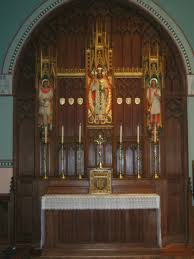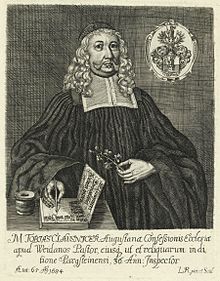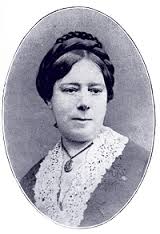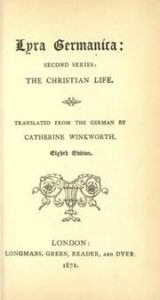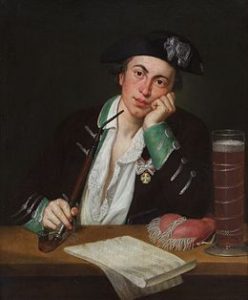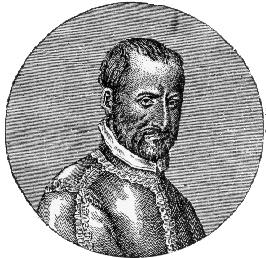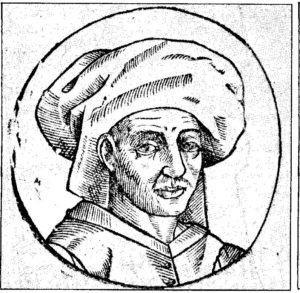Baltimore
Personal Ordinariate of the Chair of St. Peter
February 5, 2017
Hymns
Thou whose almighty word
Blessed Jesus, at Thy word
Sing praise to God who reigns above
Anthems
Perfice gressus meos, Giovanni Pierluigi da Palestrina
Ave verum corpus, Josquin des Prez
Thou whose almighty word was written by the Anglican clergyman John Marriott (1780-1825). It is a call to mission, reminding us that the essence of the Church is mission, to bring light to the world. At the beginning, God said “Let there be light,” and now in our time the Father again through his Word lets the light of the Gospel shine into the chaos and darkness of the world. The hymn is also Trinitarian, reminding us that all three Persons bring light: the Father who through the word created the universe and recreates it through the Gospel; the Son, who comes like the rays of the rising sun, “with healing in his wings” (Malachi 4:2), with a light which heals diseased minds and gives light to the blind; the Spirit who at the beginning moved over the dark waters and who now broods over the darkness of the world to bring the light of Christ to the dark earth.
Formerly Christian countries are now mission lands, and are filled with darkness and error. Among us are those whose minds are sick with lies, whose minds are darkened, who are despairing and see no life beyond the grave. The Gospel brings life and hope because it shows that the chaos of the world is being transformed by the light of the Gospel of the Risen Lord.
John Marriott, M.A, son of E. Marriott, D.D., Rector of Cottesbach, near Lutterworth, was born at Cottesbach, in 1780, and educated at Rugby, and Christ Church, Oxford. He was the second of two who obtained honours in the schools in 1802, the first year in which there was a public examination for honours at Oxford. He was also Student of Christ Church, and for about two years a private tutor in the family of the Duke of Buccleuch. The Duke presented him to the Rectory of Church Lawford, Warwickshire. This he retained to his death, although his wife’s health compelled him to reside in Devonshire, where he was successively curate of St. Lawrence and other parishes in Exeter, and of Broadclyst, near Exeter, where he died March 31, 1825. (Hymnary)
The tune is Moscow, also known as Italian Hymn, composed by Felice Giardini, (Turin, April 12, 1716 – Moscow, June 8, 1796), an Italian composer and violinist. Felice de Giardini (b. Turin, Italy, 1716; d. Moscow, Russia, 1796) composed ITALIAN HYMN in three parts for this text at the request of Selina Shirley, the famous evangelically minded Countess of Huntingdon. Giardini was living in London at the time and contributed this tune and three others to Martin Madan’s Collection of Psalm and Hymn Tunes (1769), published to benefit the Lock Hospital in London where Madan was chaplain.
Giardini achieved great musical fame throughout Europe, especially in England. He studied violin, harpsichord, voice, and composition in Milan and Turin; from 1748 to 1750 he conducted a very successful solo violin tour on the continent. He came to England in 1750 and for the next forty years lived in London, where he was a prominent violinist in several orchestras. Giardini also taught and composed operas and instrumental music. In 1784 he traveled to Italy, but when he returned to London in 1790, Giardini was no longer popular. His subsequent tour to Russia also failed, and he died there in poverty. (Hymnary)
Thou, whose almighty word
Chaos and darkness heard,
And took their flight
Hear us, we humbly pray,
And where the gospel-day
Sheds not its glorious ray,
Let there be light!Thou, who didst come to bring
On thy redeeming wing
Healing and sight,
Health to the sick in mind,
Sight to the inly blind,
O now, to all mankind
Let there be light!Spirit of truth and love,
Life-giving, holy Dove,
Speed forth thy flight;
Move on the water’s face,
Bearing the lamp of grace,
And in earth’s darkest place
Let there be light!Holy and blessèd Three,
Glorious Trinity,
Wisdom, Love, Might;
Boundless as ocean’s tide
Rolling in fullest pride,
Through the earth far and wide
Let there be light!
Here (with some feedback) is the International Choir of Notre-Dame Cathedral (CIC) of Ho Chi Minh-City (Vietnam) singing this hymn in opening of Pentecost Mass on June 3rd 2001. Here is a version for four clarinets. And here is the choir of the Norwich Cathedral.
____________________
Blessed Jesus, at Thy Word was written by Tobias Clausnitzer (1619-1684) and translated by Catherine Winkworth (1827-1828). It has many themes beloved of Lutherans: the Word of God is Himself the power that gathers us together to hear Him; the Word by his teaching draws our hearts to love Him; the Spirit prays within us with unutterable groans; we trust in the promise of God’s Word, and are therefore consoled.
Tobias Clausnitzer (5. Februar 1619 in Thum; † 7. Mai 1684 in Weiden in der Oberpfalz) war ein deutscher lutherischer Geistlicher und Kirchenliederdichter. Clausnitzer wurde als Sohn eines Kärrners und Landfuhrmanns in Thum geboren. Er studierte ab 1642 Evangelische Theologie an der Universität Leipzig. Im Jahr 1644 wurde er Feldprediger in einem schwedischen Regiment. Nachdem er 1649 in Weiden auf Befehl des schwedischen Generals Wrangel die Feldpredigt zur Feier des Westfälischen Friedens hielt, wurde er dort Pfarrer und später auch kurpfälzischer Kirchenrat und Inspektor des gemeinschaftlichen Amtes Parkstein und Weiden. Er starb 1684 als Superintendent in Weiden. (Wikipedia)
Tobias Clausnitzer was born at Thum, near Annaberg, in Saxony, probably on Feb. 5,1619. After studying at various Universities, and finally at Leipzig (where he graduated M.A. in 1643), he was appointed, in 1644, chaplain to a Swedish regiment. In that capacity he preached the thanksgiving sermon in St. Thomas’s Church, Leipzig, on “Reminiscere” Sunday, 1645 (ii. Sunday in Lent) on the accession of Christina as Queen of Sweden; as also the thanksgiving sermon at the field service held by command of General Wrangel, at Weiden, in the Upper Palatine, on January 1, 1649, after the conclusion of the Peace of Westphalia. In 1649 he was appointed first pastor at Weiden, and remained there (being also appointed later a member of the Consistory, and inspector of the district,) till his death, on May 7, 1684. (Hymnary)
The German:
Liebster Jesu! wir sind hier,
Dich und dein Wort anzuhören.
Lenke Sinnen und Begier
Auf die süßen Himmelslehren:
Daß die Herzen von der Erden
Ganz zu dir gezogen werden.Unser Wissen und Verstand
Ist mit Finsterniß verhüllet,
Wo nicht deines Geistes Hand
Uns mit hellem Licht erfüllet:
Gutes denken, thun und dichten
Mußt du selbst in uns verrichten.O du Glanz der Herrlichkeit,
Licht vom Licht aus Gott geboren!
Mach uns allesamt bereit,
Öffne Herzen, Mund und Ohren:
Unser Bitten, Flehn und Singen
Laß, Herr Jesu, wohl gelingen.
The translation by Catherine Winkworth (stanzas 1-3; unknown, stanza 4)
Blessed Jesus, at Thy word
We are gathered all to hear Thee;
Let our hearts and souls be stirred
Now to seek and love and fear Thee,
By Thy teachings, sweet and holy,
Drawn from earth to love Thee solely.All our knowledge, sense, and sight
Lie in deepest darkness shrouded
Till Thy Spirit breaks our night
With the beams of truth unclouded.
Thou alone to God canst win us;
Thou must work all good within us.Glorious Lord, Thyself impart,
Light of Light, from God proceeding;
Open Thou our ears and heart,
Help us by Thy Spirit’s pleading;
Hear the cry Thy people raises,
Hear and bless our prayers and praises!Father, Son, and Holy Ghost,
Praise to Thee and adoration!
Grant that we Thy Word may trust
And obtain true consolation
While we here below must wander,
Till we sing Thy praises yonder.
Here it is sung by a boy’s voice. Here by a choral group.
Catherine Winkworth (13 September 1827 – 1 July 1878) was born at 20 Ely Place, Holborn, on the edge of the City of London. She was the fourth daughter of Henry Winkworth, a silk merchant. In 1829, her family moved to Manchester, where her father had a silk mill. Winkworth lived most of her early life in this great city, engine of the Industrial Revolution. Winkworth studied under the Rev. William Gaskell, minister of Cross Street Chapel, and with Dr. James Martineau, both of them eminent British Unitarians. She subsequently moved with the family to Clifton, near Bristol. Her sister Susanna Winkworth (1820–1884) was also a translator, mainly of German devotional works.Winkworth translated biographies of two founders of sisterhoods for the poor and the sick: Life of Pastor Fliedner, 1861, and Life of Amelia Sieveking, 1863.
She is best known for bringing the German chorale tradition to English speakers with her numerous translations of church hymns, which were published in the Lyra Germanica.
She also worked for wider educational opportunities for girls and in promoting women’s rights, as the secretary of the Clifton Association for Higher Education for Women, and a supporter of the Clifton High School for Girls, where a school house is named after her, and a member of the Cheltenham Ladies’ College. She was likewise governor of the Red Maids’ School in Westbury-on-Trym in the city of Bristol.
According to the Encyclopedia of Britain by Bamber Gascoigne (1993), it was Catherine Winkworth who, learning of General Charles James Napier’s ruthless and unauthorised, but successful campaign to conquer the Indian province of Sindh, “remarked to her teacher that Napier’s despatch to the governor-general of India, after capturing Sindh, should have been Peccavi (Latin for ‘I have sinned’: a pun on ‘I have Sindh’). She sent her joke to the new humorous magazine Punch, which printed it on 18 May 1844. She was then sixteen years old. The Oxford Dictionary of Quotations attributes this to Winkworth, noting that it was attributed to her in Notes and Queries in May 1954.The pun has usually been credited to Napier.] The rumour’s persistence over the decades led to investigations in Calcutta archives, as well as comments by William Lee-Warner in 1917 and Lord Zetland, Secretary for India, in 1936.
Catherine Winkworth died suddenly of heart disease near Geneva on 1 July 1878 and was buried in Monnetier, in Upper Savoy. A monument to her memory was erected in Bristol Cathedral. She is commemorated as a hymn writer with John Mason Neale on the liturgical calendar of the Episcopal Church on 7 August.
The tune LIEBSTER JESU was composed by Johann Rudolf Ahle.
Johann Rudolph Ahle (24 December 1625 – 9 July 1673) was a German composer, organist, theorist, and Protestant church musician.
Ahle was born in Mühlhausen, Thuringia. While not much is known of his early musical training, he studied at the grammar school in Göttingen and then studied theology at the University of Erfurt from 1645 to 1649. In 1646 he became cantor at the Church of St. Andrew in Erfurt. In 1648 he published the Compendium per tenellis, a theoretical treatise on choral singing which was reprinted several times during his lifetime and for a last time 50 years later by his son Johann Georg (the last edition appeared in 1704).
In 1654 Ahle assumed the post of organist at the Church of St Blaise in Mühlhausen. The next year he married Anna Maria Wölfer; their son, Johann Georg Ahle (1651-1706), was also a well-known composer and organist. Johann Rudolph was elected a town councilman in Mühlhausen in the 1650s, and was elected mayor shortly before his death in 1673. His immediate successor at St. Blasen/Blasius was his son Johann Georg, and then briefly Johann Sebastian Bach, who was in Mühlhausen in 1707/08.
Much of his compositional output consists of sacred choral and vocal works, instrumental music, and organ music. He is best known for motets and sacred concertos (most of them in German, some in Latin) contained in Neu-gepflanzte Thüringische Lust-Garten, in welchem… Neue Geistliche Musicalische Gewaechse mit 3, 4, 5, 6, 7, 8, 10 und mehr Stimmen auf unterschiedliche Arten mit und ohne Instrument … versetzet (1657–65). He is also known for hymn melodies, of which three remain in the Evangelical Hymn Book. (Wikipedia)
Except for his collection of dances of 1650, Ahle’s large output of music consists entirely of sacred vocal works. On the whole it is interesting not because it is original but because it is typical of the music written for the Protestant Church in Thuringia and Saxony during the third quarter of the 17th century. Moreover, since Ahle and his son were the immediate predecessors of the young J.S. Bach, who as his first employment held the same position as they did at St Blasius, the state of music under them provides at least a few clues to some of the early influences on J.S. Bach’s style. Ahle was probably influenced by Michael Altenburg and especially by Hammerschmidt, who, though belonging to the generation of Heinrich Schütz, wrote simpler and more popular church music. He cultivated the simple style of the chorale, avoiding polyphonic counterpoint. Certainly the tendency towards popularization characterizes almost all of Ahle’s output. His tunes were for long very popular, and are still sung in the Protestant churches of Thuringia – amongst others that known as Liebster Jesu, wir sind hier. (Bach Cantata Website)
The tune is of surpassing sweetness; J. S. Bach used it in a cantata (BWV 373) and six choral preludes. Here is the cantata with choral prelude BWV 633, 634, etc. Here is a charming version by four siblings – Bach would have loved it. Here in Italy with proper choral prelude.
Here is Albert Schweitzer in 1937 playing BWV 731 on the organ of the Église Sainte-Aurélie in Strasbourg (with an unusual video). And there are that and other preludes in unusual versions Here is Alicia de Laroccha (ah, I remember hearing her when we were both young). Here a lively version for piano and percussion. Here we have it on the flute and organ in Brazil. Here on four cellos. Here on guitar (rather nice). Here for a Japanese recorder ensemble. Here are the Swingle Singers. Here for saxophone, cello, and piano. Yes, here for accordion.
It is a lovely prelude, but I am astonished at how it has captured the popular imagination all over the world, really becoming a part of pop culture, like Durer’s Hands.
____________________
O worship the King, all glorious above was composed by Sir Robert Grant.
“In the beginning God created the heavens and the earth.” These may be some of the best-known words in the Bible, but in 1835, Robert Grant wrote a text that helps us see the creation story in a new light. His meditation on the creation theme of Psalm 104 consists of six verses that parallel the six days of creation. But rather than simply paraphrase the psalm or the first two books of the Bible, Grant focuses on how creation is a testimony to God’s “measureless might.” And Grant’s beautiful text doesn’t stop at Genesis Two. Rather, in the fourth and fifth verse we celebrate God’s saving grace to his creation. When God took that seventh day of rest, he was not signaling an end. He continued to bless His creation, even those as feeble and frail as us. In the last verse, Grant points to Christ as the ultimate reconciler of a broken, but still beautiful creation.
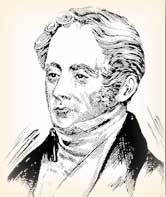 Grant was the second son of Mr. Charles Grant, sometime Member of Parliament for Inverness, and a Director of the East India Company, was born in 1785, and educated at Cambridge, where he graduated in 1806. The Grants were members of the Clapham set, an Evangelical group in the Church of England. Called to the English Bar in 1807, he became Member of Parliament for Inverness in 1826; in that position, through his persistent efforts a bill was eventually passed which emancipated England’s Jews.
Grant was the second son of Mr. Charles Grant, sometime Member of Parliament for Inverness, and a Director of the East India Company, was born in 1785, and educated at Cambridge, where he graduated in 1806. The Grants were members of the Clapham set, an Evangelical group in the Church of England. Called to the English Bar in 1807, he became Member of Parliament for Inverness in 1826; in that position, through his persistent efforts a bill was eventually passed which emancipated England’s Jews.
He became a Privy Councillor in 1831; and Governor of Bombay, 1834, where he had opportunity to put his social concerns into practice, for the poverty and spiritual condition of the common people were appalling. He died at Dapoorie, in Western India, July 9, 1838. As a hymn writer of great merit he is well and favorably known. His hymns, “O worship the King”; “Saviour, when in dust to Thee”; and “When gathering clouds around I view,” are widely used in all English-speaking countries. Some of those which are less known are marked by the same graceful versification and deep and tender feeling. The best of his hymns were contributed to the Christian Observer, 1806-1815, under the signature of “E—y, D. R.”; and to Elliott’s Psalms & Hymns, Brighton, 1835. In the Psalms & Hymns those which were taken from the Christian Observer were rewritten by the author. The year following his death his brother, Lord Glenelg, gathered 12 of his hymns and poems together, and published them.
The tune is Lyons, composed by Joseph Martin Kraus (20 June 1756 – 15 December 1792), a composer in the classical era who was born in Miltenberg am Main, Germany. He moved to Sweden at age 21, and died at the age of 36 in Stockholm. He is sometimes referred to as “the Swedish Mozart”, and had a life span which was very similar to that of Mozart’s.
O worship the King all glorious above,
O gratefully sing His power and His love;
Our Shield and Defender, the Ancient of Days,
Pavilioned in splendor, and girded with praise.O tell of His might, O sing of His grace,
Whose robe is the light, whose canopy space.
His chariots of wrath the deep thunderclouds form,
And dark is His path on the wings of the storm.The earth with its store of wonders untold,
Almighty, Thy power hath founded of old;
Hath stablished it fast by a changeless decree,
And round it hath cast, like a mantle, the sea.Thy bountiful care what tongue can recite?
It breathes in the air, it shines in the light;
It streams from the hills, it descends to the plain,
And sweetly distills in the dew and the rain.Frail children of dust, and feeble as frail,
In Thee do we trust, nor find Thee to fail;
Thy mercies how tender, how firm to the end,
Our Maker, Defender, Redeemer, and Friend!
Here is the tune for the organ, for the piano and women’s choir, for hand bells, for two violins, for women’s choir and drums and stuff, for praise band, for acoustic guitar, for piano and cello, for euphonium and piano, with handbells AND ballerina, for trombone and drums, on the harmonium.
Let us now bow our heads and offer to God great thanks for our choir director, organist, and choir. Let all say, “Amen!”
____________________
Perfice gressus meos, by Giovanni Pierluigi da Palestrina (1525-1594).
Giovanni Pierluigi da Palestrina was an Italian Renaissance composer of sacred music and the best-known 16th-century representative of the Roman school of musical composition. He had a lasting influence on the development of church music, and his work has often been seen as the culmination of Renaissance polyphony.
Perfice gressus meos in semitis tuis: Ut non moveantur vestigia mea:
Inclina aurem tuam et exaudi verba mea:
Mirifica misericordias tuas: qui salvos facis sperantes in te, Domine.
O hold thou up my goings in thy paths: that my footsteps slip not.
Incline thine ear to me, and hearken unto my words.
Shew thy marvellous loving-kindness, thou that art the Saviour of them which put their trust in thee.
This is the Offertory for Sexmagesima and Penetcost VI. Text is from Psalm 17 (Clementine Vulgate 16).
Here it is sung by the Trinity College Choir of Cambridge. Here is an arrangement for guitar (rather nice).
____________________
Ave verum corpus by Josquin des Prez (1450-1521)
He was the most famous European composer between Guillaume Dufay and Palestrina, and is usually considered to be the central figure of the Franco-Flemish school. Josquin is widely considered by music scholars to be the first master of the high Renaissance style of polyphonic vocal music that was emerging during his lifetime.
Ave verum corpus natum ex Maria virgine, vere passum immolatum in cruce pro homine, cuius latus perforatum unda fluxit sanguine, esto nobis praegustatum mortis in examine.
Hail, true Body, born of the Virgin Mary, who having truly suffered, was sacrificed on the cross for mankind, whose pierced side flowed with water and blood: May it be for us a foretaste [of the Heavenly banquet] in the trial of death.
Here it is at Columbia University. Here with all women’s voices by In Mulieribus.
